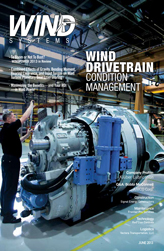I understand AIMCO places a high value on a “best practices” approach to manufacturing its line of industrial tools. Can you tell us a little about that?
Best Practices in manufacturing begin with the fundamental design of the product. Product design must result in a user experience that encompasses all aspects of the end-user’s expectations on the applications it interacts with. Effective user experience goes well beyond simply giving customers what they say they want or checking off a feature list. AIMCO combines group design, engineering, marketing, and user interfaces into one cohesive package affording the end user the ultimate tool and user experience.
What happens after the design stage?
Designs, once completed and handed off to manufacturing, should be produced, from front end to back end, with attention to detail in each step of the process. Materials used in production of the process should be thoroughly inspected for adherence to design specifications as well as quality. Effective processes flow correct materials to the production floor while facilitating quarantine of any non-conforming materials. Inspected components can then flow to the production area with the knowledge that they are suitable and, most importantly, safe for use on the final product. Documentation and data control principles, with controlled revisions, are a critical part of this being successful.
Is there anything that makes AIMCO’s manufacturing processes unique?
One way AIMCO achieves a competitive edge is by utilizing their trademark PERQ (Productivity, Ergonomics, Reliability, and Quality) process. PERQ is the industry standard formula that matches the needs of the manufacturer with the assembly tools they use in their processes. Through this process we are able to identify the most effective assembly tooling systems, as well as the manufacturer´s needs, with the end result being increased revenue and decreased costs.
Can you give us an example of a noticeable new trend in manufacturing?
Data collection and traceability have become a large focus for today’s manufacturers. The ability to track vital statistics, torque, angle curves, and rundown plots assure that the assembly process is being performed accurately and to the proper specifications. Because data collection ensures the assembly line is running at its optimum pace and decreases the risk of human error, it has proven to be a critical element economically for those manufacturers where every second and turn of a nut, bolt, or screw is money to the bottom line.
How does a company increase and maintain optimal efficiency levels?
Today’s manufacturers utilize several systems, all with the goal of minimizing waste and maintaining optimal efficiencies. Waste can come in many forms, including too much material on hand, excessive handling of materials, and redundant steps in the production process. Organization of the workstations themselves is also an area of potential waste and the Japanese refer to this as Muda. Their belief is that a disorganized workplace is one that fosters mistakes in processes, delays on finding necessary items, and is a great source of improvement in process efficiencies. Wise companies strive for as clean and organized a process as possible so as to enable repetitive efficient movement of material and personal actions in the drive to produce the product.
What can be done to maintain desired product quality levels in manufacturing?
Products today have varying levels of complexity, each dictating a level of verification to ensure that quality standards are maintained. Some products require rigorous testing at each step of the process while others are suitable for sample tests at predetermined intervals. In today’s litigious societies and competitive markets, it is foolhardy to not have any form of product testing and data collection in place. These systems will ensure that not only is the product correct and ready for the user, but acts as insurance against defect claims should they arise.
What do you suggest as methods for assessing customer satisfaction with product quality?
Manufacturers should be constantly engaging the end users for feedback on how the products perform in actual use. Strong connections to the customer and an objective look at feedback, both positive and negative, can be powerful in adjusting processes and improving products in a dynamic world. Kaizen is another valuable tool of Japanese management and it simply stated means continuous improvement. No matter how small the positive changes may be, when taken as a collective exercise, great strides in improvement are always made over time.
For more information, visit www.aimco-global.com.








































